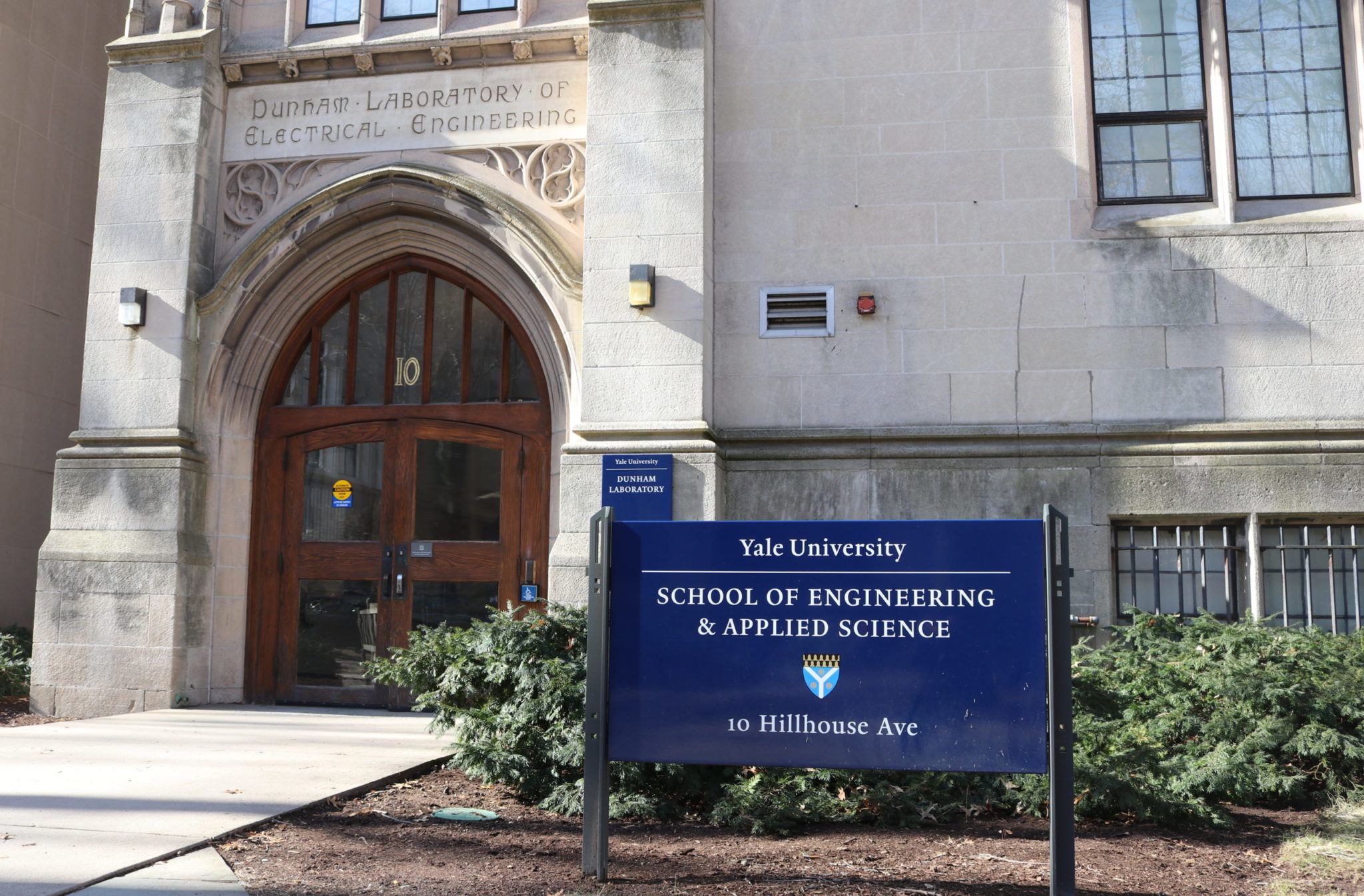Yale researchers develop nasal spray mRNA vaccine for COVID-19
Yale researchers, led by Professor Mark Saltzman, have successfully created an mRNA no-shot COVID vaccine, which successfully protects against COVID-19 in mice.

Yale Daily News
A team of Yale researchers may have found a new way for medical professionals to administer COVID-19 vaccines.
In a paper published in the biomedical journal, Science Translational Medicinal, researchers at the Yale School of Engineering & Applied Science and the School of Medicine developed a method using nanoparticles to deliver an mRNA COVID-19 vaccine in mice. Compared to available COVID-19 shots, the nasal spray opens the door to a less invasive vaccination option.
“There’s been a lot of enthusiasm for different modes of delivery,” said Jason Schwartz ENV ’13, an associate professor of health policy at the Yale School of Public Health who was not involved in the study. “And a lot of enthusiasm for these next generation of COVID vaccines.”
According to Mark Saltzman, professor of biomedical engineering and the paper’s senior author, a nasal approach to vaccines might provide more protection against the virus.
Saltzman’s co-author, Sterling Professor of Immunobiology Akiko Iwasaki, had also previously demonstrated that vaccines delivered nasally — the same way humans encounter the pathogen in the real-world — could be more effective than a shot.
“That more natural exposure to the vaccine can provide an enhanced protective response from the immune system,” Saltzman said. “It’s really her work that has inspired us to figure out how you could administer an mRNA vaccine in this way.”
Saltzman explained that the vaccines work by using PACE, a nanoparticle delivery system. PACE sheaths a spike protein which encodes a SARS-CoV-2 mRNA vaccine so they can be inserted into cells. Inside the cell, they can generate a response that helps individuals develop immunity to COVID-19.
According to Schwartz, nasal vaccines could be easier to use, since they do not require needles or injections. The spray also allows for the possibility of self-administered vaccines in the future.
Traditional vaccines also might trigger needle anxiety in some individuals, Schwartz said, to which nasal sprays might offer a solution.
“To the extent that we can remove at least that one issue of needle anxiety or the nature of the injection, we can take that off the table,” Schwartz said. “It’s at least one reason for hesitancy to receive vaccines.”
Still, creating this vaccine was not without challenges. According to Saltzman, the lungs contain a layer of mucus that makes it difficult for the mRNA to reach the target cells. Some nasal vaccines using nanoparticle technology have also been shown to cause inflammation in lung tissue.
The team overcame those hurdles by coating the nanoparticles with co-polyethylene glycol, a compound that Saltzman describes as a slippery coat which allows the nanoparticle to pass through the mucus and remain intact.
The final step was getting the mRNA into the cell without accidentally killing the cells.
“That I think is the hardest barrier,” Saltzman said. “It’s easy to get things into cells and kill them. It’s harder to make it effective without causing safety concerns. You are on the line between effectiveness and safety.”
Saltzman said he sees the vaccine technology as promising not only for COVID-19 vaccines, but also for other immunizations against respiratory infections like the flu and respiratory syncytial virus. He said he also hopes to modify the nano-particle design to combat genetic diseases in the lungs like cystic fibrosis.
Schwartz is optimistic that this technology could help “facilitate the broad distribution of vaccines.” Equitable access to vaccinations could become easier with widespread availability of an easy-to-administer nasal spray, he explained.
But Schwartz also raised concerns about the need for education around these potential nasal vaccines.
“Innovation as we saw with mRNA vaccines in general can be both exciting but can also be one more source of concern that the public health community needs to educate and inform about,” Schwartz told the News. “Should technologies like the one that research is happening here at Yale, make its way down the line and actually arrive at a widely used and approved kind of product?”
James Meek, the associate director of the Yale Emerging Infections Program, wrote to the News expressing reservations about the widespread implementation of self-administered nasal vaccines. At-home COVID-19 vaccines, he explained, could make vaccine tracking more difficult for public health officials.
“A major disadvantage to self-administered vaccines, from a public health perspective, is the lack of ability to reliably track vaccine uptake,” he wrote.
Currently, when a healthcare provider administers a vaccination they are required to register that event in the state immunization registry, Meek explained. He warned that the public health impact of self-vaccination could end up becoming similar to COVID-19 home testing. Home testing for COVID-19, according to Meek, reduced public health experts’ ability to accurately monitor how much of the COVID-19 virus is circulating.
The license for the team’s patent has already been given to the biotech company Xanadu Bio. But Schwartz explained that nasal COVID-19 vaccines might not be publicly available in the near future.
“I think on the one hand, we say this is promising, but it’s a reminder that there’s a long path, probably measured in years, before a product like this would actually reshape what individuals receive in their pharmacies or their doctor’s offices,” he said. “Lots of things that can go wrong along the way. That’s how medical research works.”
The Yale School of Engineering & Applied Science was founded in 1852.







